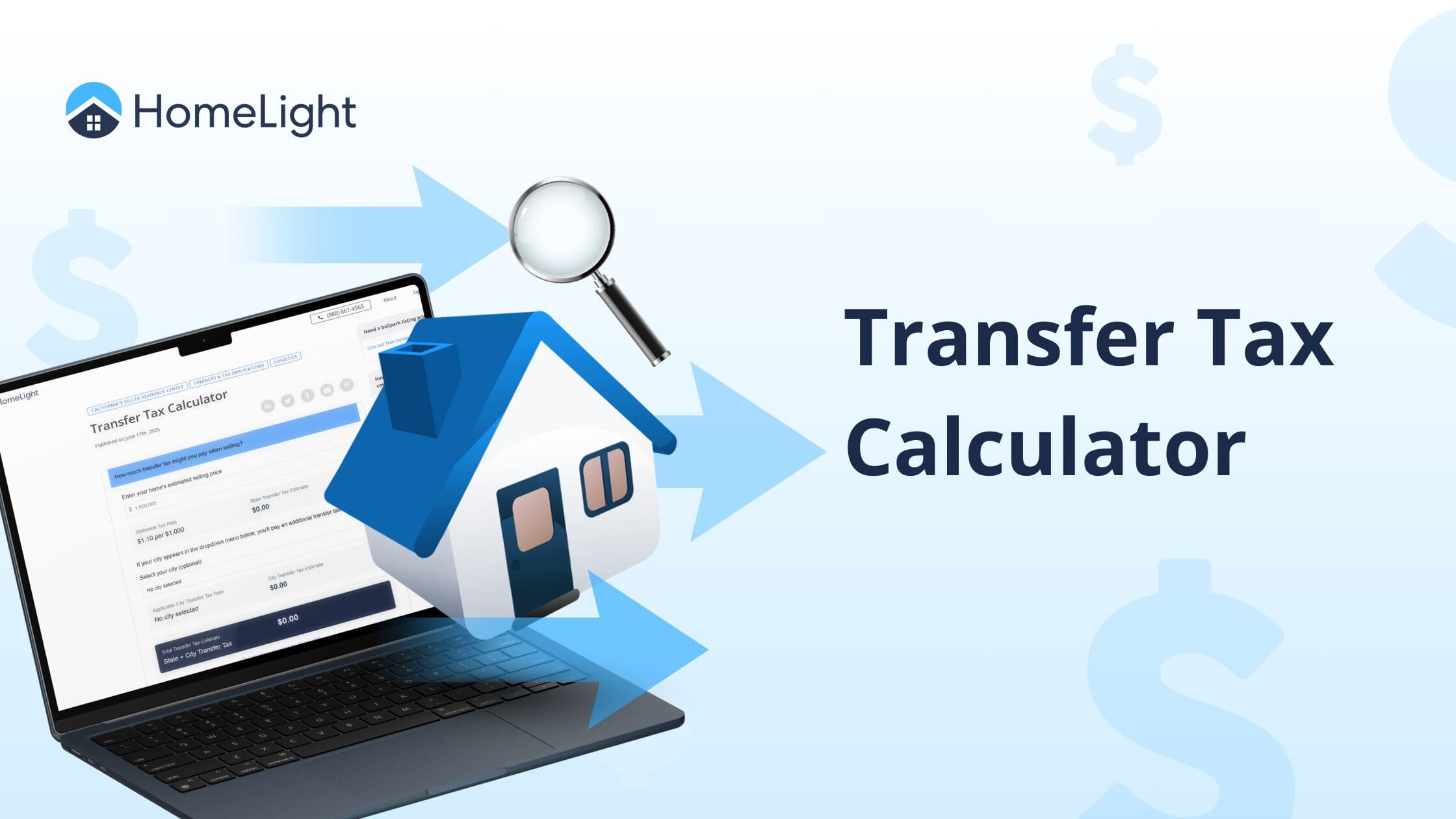
You’re ready to list your house for sale. Before you start packing to move, there are some things to do. It’s time to prep your home for sale. To help you, we have compiled a checklist of effective home preparation and staging tips based on research and expert advice from Chris Pappalardo, ranked in the top 2% of agents in Greensboro, North Carolina, and Edward Kaminsky, who works with 66% more single-family homes than the average Manhattan Beach, California, agent. Don’t be overwhelmed. By following these pre-listing suggestions step by step, you can achieve a smoother and more profitable home-selling experience. Getting your home ready for sale doesn’t have to be complicated or confusing. To keep you on track, we have provided a list of things almost every seller should do to get ready to make top dollar. If you don’t already have one, HomeLight’s Agent Finder can help you locate a top agent in your area within minutes. This free service analyzes over 27 million transactions and reviews to determine the best agent for you. Our data shows that the top 5% of real estate agents sell homes for up to 10% more than the average agent – and they often do it faster. Working with an experienced real estate agent gets exposure for your house. “Exposure means money,” Kaminsky states. “The more people that know about the home, the more likely you’re going to get the highest price for the house.” Kaminsky believes that buyers who use real estate agents are serious buyers who are prepared to spend to get what they want, and that those looking at FSBOs are looking for bargains because the seller isn’t paying a commission to a real estate agent. There are many benefits to listing with a top real estate agent, from pricing to paperwork to negotiating with buyers and more. “Handing it all to an expert [who has] been through that can make a significant difference,” Kaminsky says. Top agents know what buyers want and what features help homes sell for the best price. They know which investments can increase your home’s value by as much as 35% – and what changes not to make. “I beg my sellers not to spend any money before I come over because they usually spend too much money on the wrong stuff,” Pappalardo says. Buyers find it difficult to imagine themselves living in your home if all they see as they look around are your personal photos and mementos. It may be even worse than that. If your home is overcrowded with furniture and other items, they can’t see the space properly. “You want your rooms to feel big,” explains Pappalardo. “If you have an overcrowded arrangement of extra furniture that leaves literally only an inch of space between the buyer and their agent, it’s uncomfortable.” It’s more than uncomfortable; it’s expensive. HomeLight’s research reveals that reducing clutter can add over $2,500 to your home’s value at resale. Go room by room to clear out clutter. According to a HomeLight survey, top agents ranked the living room (84%), primary bedroom (75%), and kitchen (66%) in order of importance for a seller to stage, so consider those as equally important to declutter. Consider it part of the decluttering process – or consider it common sense — to protect yourself and your valuables while your house is open to the public. Simple precautions, such as securing your medicine in a lockbox, concealing your passwords, Wi-Fi code, checkbook, jewelry, keys, and other valuables that might prove too tempting and too easy to unscrupulous visitors. Once you have decluttered, you might realize you’re overdue for some deep cleaning. It’s worth the effort. A HomeLight report discovered that deep cleaning can add nearly $2,000 in resale value. When you’re ready to tackle cleaning, make a separate list. Kitchens and baths are good places to begin your war on grime. Be sure to include appliances such as the refrigerator, dishwasher, and oven. Make mirrors and faucets sparkle. Scour the grout. Wash the walls. Mop the floors. Every room can use some attention. Put fresh linens on the beds. Wash or dry-clean the window treatments. Shampoo the carpets. Dust everything. In this ongoing pandemic era, it’s doubly important not only to clean your home, but also to disinfect high-touch areas, both before and after showings. If you don’t have time for deep cleaning, house cleaners charge an average of $30 to $50 per hour. In the end, it can prove to be money or time well spent. Malodors make a lousy impression on buyers. Whether it’s cigarette smoke, cooking odors, pet smells, or a musty mold aroma, an unpleasant stench could be so distracting that a buyer can’t get past them to notice the wonderful features of your home. If odor lingers after you have deep-cleaned your home, it’s time to take more drastic measures. Start with simple steps, like: You may have to call a professional to eliminate dangerous volatile organic compounds (VOCs). Whatever you do, don’t try to mask odors with heavy perfumes. Get to the cause and eliminate it. Once you have eliminated odors and their causes, you may be tempted to add a fresh scent. Researchers have discovered that a citrus smell increases the perceived value of a home. In general, buyers prefer simple, neutral, and natural scents to heavy aromas found in plug-ins, candles, or essential oils. Every homeowner continually chases routine maintenance and repair items. It’s a given. However, when you’re trying to sell your home, leaving too many of those items on your to-do list gives a bad impression. If you haven’t taken care of the little things, buyers may wonder what bigger problems you have neglected. That can turn away buyers or lead to low offers. “If you’re not willing to do the $5 caulk job, or buy a $20 gallon of paint to fix flaking paint, then what other maintenance items aren’t you addressing?” asks Pappalardo. “So, repair the caulk around the tubs, fix flaking paint, make sure every window works properly. There [are] so many little things you can fix.” Create a daily, weekly, monthly, and seasonal checklist of maintenance and repairs you should keep on top of. Repair the obvious things. Remember: in many states, the seller is legally required to disclose defects. By fixing some of the smaller things, you reduce the length of that list. Choose your repairs wisely. Many renovations provide only 50% (or less) return on investment. Fixing everything in your house will never make up for an unfixable flaw with the property – such as location, lack of parking, a power line on your property – so don’t even try. A few things not to waste time and money fixing include: If there are major repairs you can’t afford to fix — or don’t want to manage — you can always sell your home “as is” through a Realtor or to a cash buyer. Some repairs may be necessary in order to pass the home appraisal and/or home inspection. A home inspection is a requirement for many mortgage loans. During an inspection, a home inspector performs a visual inspection, reporting on any health, safety, or mechanical issues that don’t meet your state’s standards or a buyer’s loan requirements. Common issues noted include water damage, roof condition, electrical problems, or structural issues could negatively impact the future health of the house. The National Association of Home Inspectors has a 1,600-item checklist for inspectors. Don’t take it personally, but an appraiser will virtually always find things wrong with a house. It’s up to the seller whether or not to fix them. “The more of those things you do up front, the less it’s going to cost you,” says Pappalardo. “If you address them yourself or hire a handyman, it’s going to be far less expensive than when the buyer demands that a contractor do the repairs.” For the optimal outcome, make sure the inspector has access to all areas of the home, such as the attic, crawlspace, and garage, and all items, like the electrical panel. A home appraiser looks at many of the same things, but for a different purpose. The home appraiser’s job is to estimate your home’s current market value for the buyer’s lender. It’s important that your home is prepared for an appraisal because appraisal issues were responsible for 27% of delayed contracts and 14% of terminated contracts (up 9% year-over-year) in 2021, according to the National Association of Realtors. Some lenders, such as FHA, have minimum property requirements that must be met for loan approval. Although an appraisal is supposed to take into account more permanent aspects, such as location, property size, square footage, zoning, and materials, if your home is dirty or in need of multiple repairs, it can affect the appraiser’s opinion. To achieve the best appraisal possible: “If the house has flaky paint, missing railings, holes in the walls, or things of that nature, then it probably won’t get approved by an FHA appraiser,” explains Pappalardo. “For example, even if you disclosed that your home needs a new roof, they may demand a new roof be put on before approving that FHA loan.” Following a home inspection or appraisal checklist may turn out to be one of the best actions you can take to avoid unexpected delays in your home sale journey. See tip 14 to learn how a pre-listing home inspection can give sellers a huge advantage. Some home projects might help you sell your home for more. In 2020, 44% of real estate agents cited the “need for more space” as the no. 1 moving motivator for buyers to close the deal. Little has changed since then. That’s why finishing a basement can give you a 70% ROI. The kitchen is one of the most important spaces for buyers, so updating cabinets or countertops could bring a worthwhile ROI. In fact, in 2021, 57% of top real estate agents considered drawer and cabinet storage as a top kitchen upgrade. Bathroom renovations are often a hit with buyers, reaping about 65% ROI. Consider that 71% of buyers look for a double vanity. If you’re planning structural renovations, be sure to acquire all necessary permits or you’ll run into trouble on the appraisal. Some upgrades can be done for little more than a repair, but will add a fresh look. For example, install new shower and sink faucets in a modern brushed nickel finish to solve the leak problem and add dollars to your home’s value at the same time. Paint is always an inexpensive and simple way to change the look and value of your home. We’ll provide more paint ideas in tip 13. Not all upgrades are worth the investment. For example, a National Association of Home Builders survey indicates that 25% of homeowners rate garage storage as “essential” and another 56% rate it as “desirable,” so a garage conversion to create an in-law suite or a home office may be misplaced renovation goals. Similarly, only 2% of real estate agents suggest renovating the attic before selling. Sometimes your renovation can go too far. You never want to own the most expensive house in the neighborhood, or over-improve for your neighborhood. The big upgrades may not be worth the investment. According to Remodeling Magazine’s 2020 Cost vs. Value Report, a high-end kitchen remodel recoups around 54% of the costs, while a minor kitchen remodel recoups about 77% of the costs. Keep in mind that personal preferences vary, so select improvements that appeal to the broadest base of buyers. When you’re ready to list your home for sale, it can be helpful to have an accurate home valuation in order to set your expectations – and the price – right. There are a few ways to get this valuation. Help can come from many directions, such as: The statistics confirm this recommendation. According to the National Association of Realtors, 47% of buyers’ agents say staging has an effect on the buyers’ impression of a home. Furthermore, staging can increase its value by 1% to 5%. Why? According to 82% of buyers’ agents, staging makes it easier for the buyer to visualize the property as a future home. An added bonus of staging is that it can also decrease the amount of time the home is on the market, according to 53% of agents. After decluttering and depersonalizing your home, you want to create a welcoming vibe that encourages buyers to picture their own families enjoying the space. Try things like: If budget is a concern, remember that less is more. Most importantly, if your home is spotless, decluttered, and depersonalized, it’s in good shape for showings. Before you can get buyers inside to see your clean, staged home, you have to hook them with your dazzling curb appeal. The importance of curb appeal cannot be understated. According to the National Association of Realtors (NAR), 96% of real estate agents advise improving curb appeal before sellers list their home for sale, and 99% believe curb appeal is essential for attracting buyers. Not only does beautiful curb appeal lure buyers, but it may also garner more money for your home. In HomeLight’s recent Top Agent Insights report, 94% of agents agree that buyers are willing to pay more for houses with great curb appeal. Kaminsky agrees, stating, “I think presentation is critically important to increasing the speed of the sale and the price that the home will actually get.” He suggests viewing your home from across the street and trying to look at it through the eyes of a buyer seeing it for the first time. “Walk up slowly to the home and look around. Notice the front door, knobs, cobwebs, and other things that you might normally ignore. It’s important to slow down and take a look.” Curb appeal also impacts a home’s online presence. “It’s absolutely critical,” Kaminsky continues. “The first impression that anyone’s going to have is online. Ninety percent or more of buyers will see the home for sale on their cell phone. That’s what they’re looking at every day, so how it presents itself online is really going to impact how buyers react.” If your budget permits, a fresh coat of paint never hurts – even if it’s just on the front door or the garage door. If your thumbs aren’t green, hire a landscaping service. NAR reports that 75% of real estate agents advise their sellers to implement a lawn care routine before listing. Basic mowing, trimming, and edging costs $30 to $80, depending on where you live and how big your yard is. In a recent HomeLight Top Agent Insights Report, 30.85% of real estate agents surveyed recommend that sellers paint their exteriors before listing. According to our research, it can earn up to a 51% return on investment. Painting the interior could increase the sale price by 1%-3%. A freshly painted house will appeal to buyers looking for a turnkey property. If your home’s paint is flaking, faded, or the color is dated, consider painting before you list it. In HomeLight’s Top Agent Insights Report for Q1 2020, 98% of top agents said that buyers gravitate to neutral color schemes. For exterior color, follow your neighborhood trends. According to the National Association of Realtors (NAR), home inspection issues were responsible for 11% of delayed contracts and 9% of contract terminations in 2021. In addition, buyers may use home inspection findings to negotiate a lower sale price or repair credits. You don’t want that to happen to your sale. To head off any issues, you can have a pre-listing home inspection. A typical home inspection checks: A pre-listing home inspection costs between $279 and $400. HomeAdvisor indicates that some home inspectors charge a flat fee for homes up to 2,000 square feet, with an additional charge per square foot beyond that. If you know you have unfinished maintenance issues or you want to sell your home quickly, a pre-listing inspection may be worth the cost. No list is complete. Other concerns and ideas may come up as you prepare your home for sale. Here are a few commonly asked questions. As Ben Franklin once said, “By failing to prepare, you are preparing to fail.” Getting your house ready for sale takes some work, but by following our checklist, you should be able to complete most of the work in three weeks or less. Or, take some of our tips and create your own list tailored to your home. Don’t forget the basics: Preparing your home for sale by following these suggestions will help you sell it faster and for more money. As always, rely on advice from your real estate agent about which preparations, upgrades, and repairs will help sell your home quickly and for top dollar. If you haven’t got one yet, you can use the HomeLight agent Match tool. It takes just two minutes to match you with the best real estate agents who will guide you through the entire process.Here’s what to do to sell your house
1. Partner with a top real estate agent
2. Declutter and depersonalize each room
3. Conceal your valuables
4. Deep clean, then keep it clean
5. Deodorize, but say no to fragrance
6. Make judicious repairs
The more of those things you do up front, the less it’s going to cost you. If you address them yourself or hire a handyman, it’s going to be far less expensive than when the buyer demands that a contractor do the repairs.
7. Follow a home inspection/appraisal checklist
8. Apply inexpensive upgrades
9. Skip unnecessary home improvements
10. Check your home’s estimated value
11. Consider home staging
12. Apply curb appeal landscaping hacks
13. Paint with prudence
14. Consider a pre-listing home inspection
Q&A – Additional tips to sell your house
Ready, set, sell



